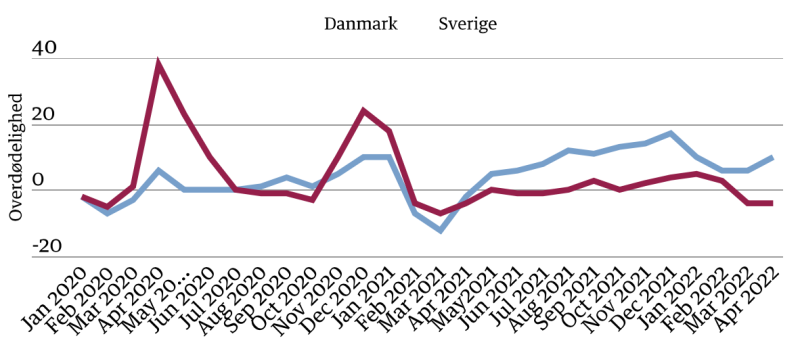During the Covid-19 pandemic, Denmark and Sweden took very different approaches. While Denmark imposed mask mandates, closed schools and repeatedly closed so-called “nonessential” businesses, Sweden imposed hardly any all-encompassing restrictions. Lockdown proponents have accused the Swedish authorities of recklessness and claimed their approach has led to an unnecessary death toll.
But now the numbers are out, and according to two Danish professors, Christian Kanstrup Holm, virologist and professor at the University of Aarhus and Morten Petersen, professor of biology at the University of Copenhagen, in an article in the Danish newspaper Berlingske Tidende on July 8th, excess mortality in 2020 and 2021 was in fact the same in both countries.
In Denmark, harsh restrictions were justified by the need to prevent the breakdown of the healthcare system and the public has generally accepted this justification. The professors’ conclusion, however, is that this justification does not hold; despite very little restrictions in Sweden, the Swedish healthcare system was never even close to breaking down.
In 2020 the Swedes certainly saw an excess mortality, while mortality in Denmark remained approximately the same as in previous years. But in 2021 this was reversed according to the data. The two professors also point out that in 2020 there was in fact no excess mortality in Sweden among those below the age of 75, which simply confirms how Covid-19 primarily attacks the oldest.


According to the models used to justify harsher restrictions in Denmark, about 30,000 people were expected to have died, had Sweden’s strategy been followed. But according to the data, the excess mortality in Sweden over the two years was around 6,000 and in Denmark 3,000, which amounts to the same percentage as the Danish population is about half the Swedish. Thus, the models were off by around 90%.
It might be added that this year we see continued excess mortality in Denmark well above that in Sweden.
“It often happens,“ the authors say, “that individuals, groups or even whole populations get caught in false dichotomies. Those are commonly based on powerful anecdotes and lead to a general acceptance of the validity of one or more claims, which do not stand up to scrutiny.“
While false beliefs may be harmless, “they can also persist for a long time, even if they have serious negative consequences, both for individuals and whole populations.“
They urge the authorities to make sure that in the future all consequences, including negative effects of restrictions on public health, psychological well-being, education and economy be considered. For this to happen “it is crucial to have the courage to debate and analyse.“
Join the conversation:


Published under a Creative Commons Attribution 4.0 International License
For reprints, please set the canonical link back to the original Brownstone Institute Article and Author.









